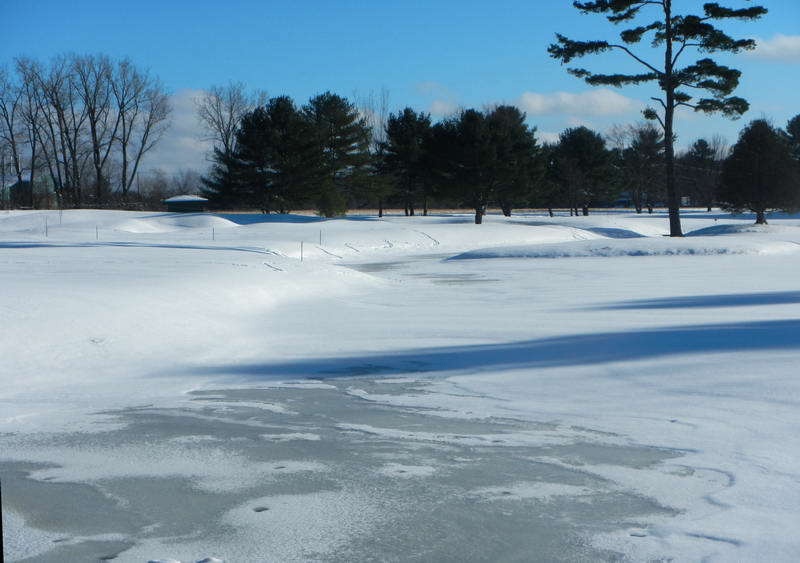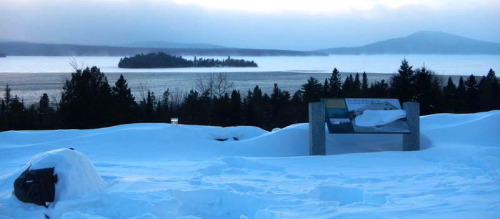 Less than a day after the snow stopped the slush layer has reached the surface in many places on this pond. The black ice layer was between a skim and about an inch when the snow fell.
Less than a day after the snow stopped the slush layer has reached the surface in many places on this pond. The black ice layer was between a skim and about an inch when the snow fell.
The first big snowstorm to hit the Northeast left 13 inches of snow in the Champlain Valley and similar amounts over many areas in the ice belt. We had a fair amount of thin ice before the snow fell. 13 inches of snow is enough to submerge up to a foot of ice. All the ice that is in place now is likely to get a slush layer on top of the black ice which will take a while to freeze fully, depending on several factors:
- How much insulating snow is over the slush layer
- Temperatures over the next couple weeks
- How much new snow falls.
When the slush does fully freeze it tends to do in an irregular fashion with areas that are better insulated taking longer. It is also likely that there will be some thinning of the black ice layer as there is no heat being pulled out of the top of the black ice layer and the water under the ice is usually two or more degrees warmer than freezing just a few inches from the bottom of the ice.
The Lake Dunore tragedy three years ago was the same situation. The main snowfall was 8 days before the accident. Even 12 days after the snowfall there were still places where the slush had not fully frozen. The thickness of black ice layer was also quite variable (probably from melting from the bottom). The ice on Waterbury Reservoir in mid-January 2012 was also layered ice.
The situation this year is especially concerning because the black ice layer is so thin on many lakes and ponds making it a hazard for dogs who may see nothing but a flat snow field rather than a pond. Obviously, if it is not strong enough for dogs it is not strong enough for people.
If you go out, be fully equipped: test pole/spud/drill, ice claws, life jacket, buddies with throw ropes. Really check the ice carefully and pay especial attention to the thickness of the black ice layer. The frozen slush layer on top is likely to be too irregular to count on so everything depends on the black ice layer.
Bob
 Tuesday, January 22, 2013 at 10:20AM
Tuesday, January 22, 2013 at 10:20AM A person on foot walked along the edge of the cattail swamp on Shelburne Pond (VT) for about 100 feet before he found a thin spot. Frozen swamps are can be a facisinating place to skate or walk. Just keep in mind that swamp ice is likely to be dodgy ice. Click here for an article on the subject.
 robertdill | Comments Off |
robertdill | Comments Off | 


